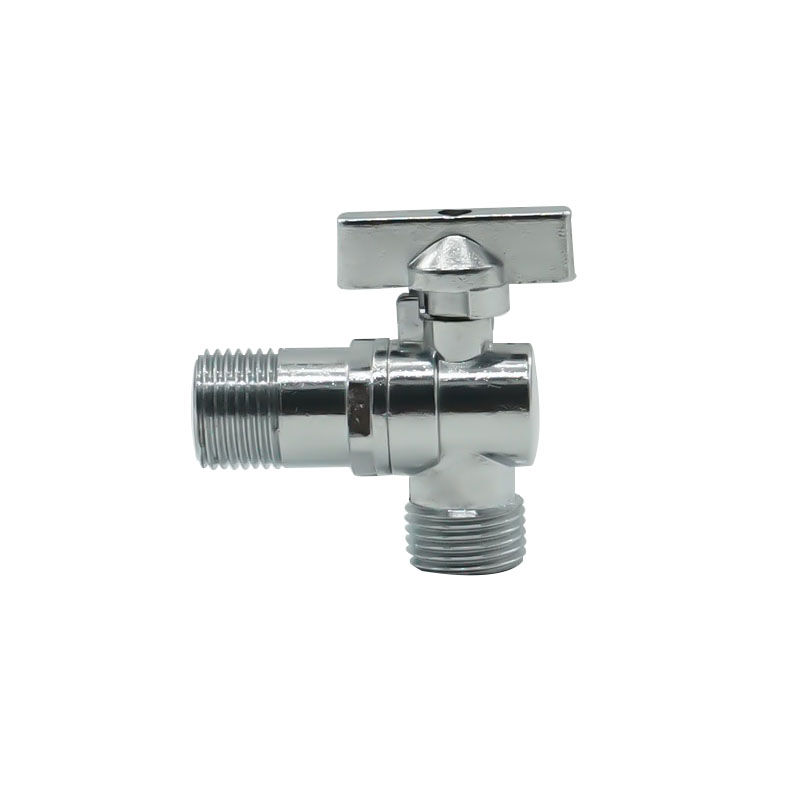Detailed Overview of Brass Pneumatic Angle Seat Valve
2024-07-30
A brass pneumatic angle seat valve is a type of valve used to control the flow of fluids in various industrial applications. It combines the functionality of an angle seat valve with pneumatic actuation, offering precise control and reliable performance. Here’s a detailed overview of its characteristics and features:
1. Design and Construction
- Body Material: Made of brass, which provides durability and resistance to corrosion, especially in non-aggressive environments. Brass is often chosen for its good machinability and resistance to wear.
- Angle Seat Design: Features an angle seat configuration where the inlet and outlet ports are positioned at a 90-degree angle to each other. This design helps in providing a compact and efficient flow path.
- Pneumatic Actuator: The valve is actuated by a pneumatic actuator that uses compressed air to operate the valve. The actuator typically includes a cylinder, diaphragm, or piston mechanism that moves the valve stem or plug.
2. Operation
- Flow Control: The valve controls the flow of fluids (such as water, air, or oil) by opening or closing the flow path. It provides precise control over flow rates and can be used to start, stop, or modulate the flow.
- Pneumatic Actuation: The pneumatic actuator operates the valve automatically or remotely. By applying compressed air to the actuator, the valve can be opened or closed as needed. This provides fast and reliable operation compared to manual valves.
3. Features
- High Flow Capacity: The angle seat design allows for high flow rates and minimal pressure drop, making it suitable for applications with high flow requirements.
- Durability: Brass construction offers good resistance to corrosion and wear, making the valve suitable for various industrial environments.
- Compact Design: The angle seat configuration helps to minimize the overall size of the valve, making it easier to fit into tight spaces or compact systems.
- Adjustable Actuation: The pneumatic actuator can be adjusted to control the valve’s opening and closing speed, providing flexibility for different applications.
4. Applications
- Industrial Processes: Commonly used in industrial processes where precise control of fluid flow is required. This includes applications in manufacturing, chemical processing, and HVAC systems.
- Automated Systems: Suitable for automated systems where remote or automatic control of fluid flow is needed. This can include automated production lines and control systems.
- Water Treatment: Used in water treatment systems for controlling the flow of water or other fluids in treatment processes.
5. Advantages
- Precision: Pneumatic actuation provides precise control over valve operation, enhancing process control and efficiency.
- Speed: The valve operates quickly, allowing for rapid response to changes in process conditions.
- Remote Operation: Can be operated remotely or integrated into automated systems, reducing the need for manual intervention.
- Reliability: Brass construction and the pneumatic actuator contribute to reliable performance and long service life.
6. Maintenance
- Regular Inspection: Periodic inspection of the valve and actuator is necessary to ensure proper operation. Check for signs of wear, leakage, or malfunction.
- Cleaning: The valve should be cleaned regularly to prevent clogging or buildup of debris that could affect performance.
- Actuator Maintenance: The pneumatic actuator requires maintenance of the air supply system and checking for leaks or issues in the actuator mechanism.
7. Safety Considerations
- Pressure Limits: Ensure the valve is operated within its specified pressure limits to prevent damage or failure.
- Proper Installation: Follow installation guidelines to ensure the valve is correctly positioned and connected in the system.
- Training: Operators and maintenance personnel should be trained in the proper use and maintenance of the valve and actuator.
8. Specifications
- Size and Connection: Available in various sizes and connection types to suit different applications and pipe sizes.
- Pressure and Temperature Ratings: Rated for specific pressure and temperature ranges based on the application requirements. Always check the manufacturer’s specifications for compatibility.
Summary
The brass pneumatic angle seat valve is a versatile and reliable component used for controlling fluid flow in industrial applications. Its brass construction provides durability and resistance to corrosion, while the pneumatic actuator offers precise and rapid control. The angle seat design allows for high flow capacity and compact installation. It is suitable for automated and remote-controlled systems and is commonly used in manufacturing, chemical processing, and water treatment applications. Regular maintenance and adherence to safety guidelines are essential for optimal performance and longevity.



